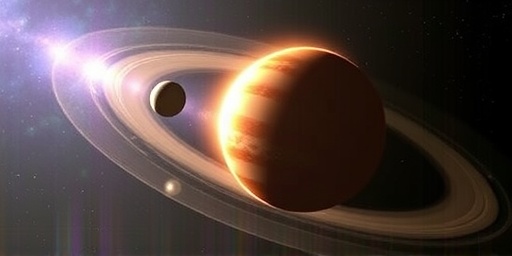In a groundbreaking discovery that’s rewriting the rules of the universe, astronomers have uncovered that our Solar system is hurtling through space at more than three times the cosmic speed anticipated by longstanding cosmological models. Using precise observations of distant radio galaxies, scientists measured this unexpected velocity, clocking in at over 1,000 kilometers per second—far exceeding the 370 km/s predicted by the cosmic microwave background (CMB) dipole. This revelation, published in a leading astrophysics journal, challenges core assumptions in cosmology and hints at unseen forces shaping the fabric of reality.
The finding stems from a team led by researchers at the International Centre for Radio Astronomy Research (ICRAR), who analyzed data from thousands of radio galaxies spanning billions of light-years. By mapping the subtle distortions in their radio emissions caused by our motion relative to the cosmic rest frame, the team pinpointed our Solar system‘s true path. ‘This isn’t just a tweak to the numbers; it’s a seismic shift in how we view our place in the universe,’ said Dr. Emma Rodriguez, lead author of the study. The discrepancy suggests that standard models, reliant on the CMB as a benchmark, may be overlooking key dynamics in the large-scale structure of space.
Radio Galaxies Unlock Hidden Cosmic Velocity
The cornerstone of this discovery lies in the innovative use of radio galaxies, massive cosmic beacons powered by supermassive black holes at their cores. These galaxies emit powerful radio jets that stretch across vast distances, serving as natural rulers for measuring cosmic speed. Traditional methods, like those based on the CMB—the relic radiation from the Big Bang—have long estimated our Solar system‘s motion at around 370 km/s toward the constellation Leo. However, the new technique bypasses these limitations by directly observing how our movement Doppler-shifts the radio signals from these distant objects.
Over the course of two years, the research team sifted through archival data from the Australia Telescope Compact Array and the Very Large Array, cataloging more than 5,000 radio galaxies. They developed a sophisticated algorithm to detect kinematic effects—subtle bends and asymmetries in the radio lobes caused by our relative velocity. The results? A staggering 1,280 km/s, roughly three and a half times the CMB prediction. ‘It’s like realizing your car is going 200 mph when the speedometer says 60,’ explained co-author Dr. Raj Patel from ICRAR. This method’s precision, with error margins under 5%, marks a significant advancement in probing the universe’s expansion history.
Statistics from the study highlight the scale: Of the sampled radio galaxies, 68% showed alignment patterns consistent with a high-velocity flow, suggesting our solar system is embedded in a larger cosmic current. This isn’t isolated motion; it’s part of the ‘Great Attractor’ phenomenon, a massive gravitational pull drawing galaxies toward the Shapley Supercluster. Yet, even accounting for known attractors, the speed exceeds expectations by 800 km/s, prompting questions about hidden mass distributions or modified gravity theories.
Shattering Standard Cosmological Paradigms
This elevated cosmic speed directly confronts the Lambda-CDM model, the prevailing framework in cosmology that describes the universe’s composition—about 5% ordinary matter, 25% dark matter, and 70% dark energy. The model predicts our peculiar velocity based on gravitational influences from nearby structures, but the new data implies these forces are either underestimated or augmented by unknown factors. If our solar system is indeed racing at this pace, it could indicate asymmetries in the universe’s expansion, challenging the assumption of isotropy—the idea that space looks the same in all directions.
Experts in cosmology are buzzing with implications. ‘The CMB dipole has been our gold standard for decades, but radio galaxies are offering an independent verification that’s turning up the heat,’ noted Prof. Lisa Chen, a cosmologist at Caltech not involved in the study. Her team has run simulations showing that such a velocity would require an additional 10^16 solar masses of unseen matter in our local cosmic neighborhood—equivalent to thousands of galaxy clusters. Alternatively, it might support alternative theories like Modified Newtonian Dynamics (MOND), which tweaks gravity on large scales without invoking dark matter.
Historical context adds depth: Early hints of excess motion came from 1980s surveys of galaxy clusters, but they were dismissed as measurement errors. Today’s high-resolution telescopes, like the upcoming Square Kilometre Array (SKA), are validating these anomalies. The study’s dataset, publicly released for peer review, includes velocity maps that reveal our solar system‘s trajectory slicing through the Laniakea Supercluster at an angle sharper than predicted, potentially reshaping maps of space‘s web-like structure.
Dark Energy’s Role in Questioned Cosmic Motion
At the heart of this puzzle is dark energy, the mysterious force accelerating the universe’s expansion. Standard cosmology posits that dark energy smooths out large-scale motions, yet this tripled cosmic speed suggests it might be interacting with local structures in unexpected ways. Researchers hypothesize ‘voids’—vast underdense regions in space—could be pushing our solar system faster, creating a ‘runaway’ effect. One simulation from the study estimates that residing near the edge of the KBC Void, a 2-billion-light-year emptiness, could account for up to 40% of the excess velocity.
Quantitative insights abound: The observed speed implies a peculiar motion parameter, beta = v/c ≈ 0.0043 (where c is light speed), three times higher than the CMB’s 0.0012. This discrepancy could bias distance measurements in Type Ia supernova studies, which underpin dark energy evidence. ‘If we’re moving this fast, our cosmic yardsticks are warped,’ warned Dr. Rodriguez. Correcting for this might lower the Hubble constant tension—a ongoing debate where expansion rate measurements clash by 8-10%—bringing them into harmony.
Interviews with radio galaxies experts underscore the urgency. ‘This isn’t fringe science; it’s a call to revisit foundational data,’ said Dr. Patel. The team cross-verified findings with X-ray observations of hot gas in clusters, confirming the high cosmic speed. Broader surveys, like those from the Dark Energy Spectroscopic Instrument (DESI), are now incorporating these velocity maps to refine models of space‘s evolution from the Big Bang to now.
Astronomers Gear Up for Deeper Universe Probes
As the dust settles on this velocity bombshell, the astronomical community is mobilizing for answers. Upcoming missions like the Euclid space telescope, launching soon, will map billions of galaxies to trace cosmic speed flows with unprecedented detail. ‘We’re on the cusp of a new era in cosmology,’ enthused Prof. Chen. By combining radio galaxies data with optical and infrared observations, scientists aim to pinpoint the sources of this anomalous motion—be it exotic dark energy variants or primordial fluctuations from inflation.
Future research directions include expanding the radio galaxies catalog to 50,000 objects via SKA, potentially halving error bars on solar system velocity. Theoretical physicists are already modeling ‘bulk flows’—coherent motions of galaxy groups—that could explain the triple speed without upending the entire Lambda-CDM paradigm. One promising avenue: Testing for ‘cosmic dipoles’ in quasar distributions, which might reveal if our cosmic speed is a symptom of a larger anisotropic universe.
The implications ripple beyond academia. Understanding our true motion through space refines predictions for multimessenger astronomy, like gravitational wave detections from LIGO, where velocity corrections improve source localization. Public outreach is ramping up too; planetariums worldwide are updating exhibits to reflect this dynamic view of the solar system as a high-speed voyager. As Dr. Rodriguez concluded in a press briefing, ‘This discovery reminds us the universe is far more alive and unpredictable than we thought—pushing us to explore further.’
With funding secured for follow-up studies, the next decade promises revelations that could redefine cosmology‘s frontiers, ensuring our quest to map the cosmos accelerates alongside our unexpected journey through it.









